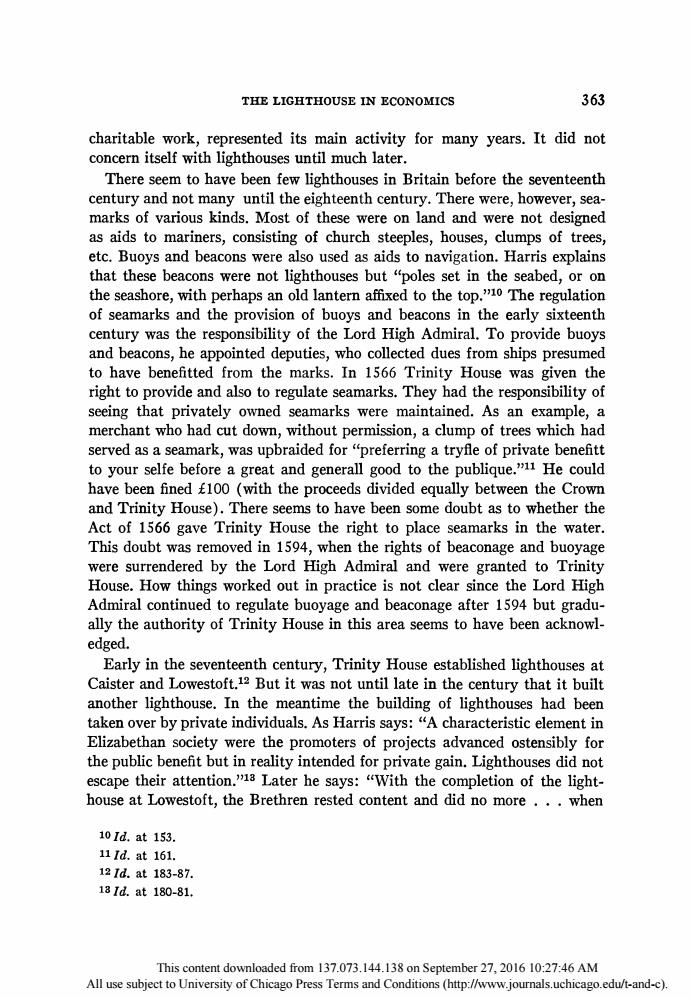正在加载图片...

THE LIGHTHOUSE IN ECONOMICS 363 charitable work,represented its main activity for many years.It did not con cern itself with lighthouses until much late There seem to have been few lighthouses in britain before the seventeenth century and not many until the eighteenth century.There were,however,sea- marks of various kinds.Most of the ese were on and and wer not designed as aids to mariners,consisting of church steeples,houses,clumps of trees, etc.Buoys and beacons were also used as aids to navigation.Harris explains that these beacons were not lighthouses but "poles set in the seabed,or on the seashore,with perhaps an old lantern affixed to the top 1 The regulation of seamarks and the provision of buoys and beacons in the early sixteenth century was the responsibility of the Lord High Admiral.To provide buoys and beacons,he ap pointed eputies, who collected dues from ships presum to have benefitted from the marks.In 1566 Trinity House was given the right to provide and also to regulate seamarks.They had the responsibility of seeing that privately owned seamarks were maintained.As an example,a merchant who had cut dowr ithout permission,a clum of trees which had served as a seamark,was upbraided for "preferring a tryfle of private benefitt to your selfe before a great and generall good to the publique."11 He could have been fined 100(with the proceeds divided equally between the Crown and Trinity House) There seems to have been so ome doubt as to whether the Act of 1566 gave Trinity House the right to place seamarks in the water. This doubt was removed in 1594,when the rights of beaconage and buoyage were surrendered by the Lord High Admiral and were gran ated to Trinit House.How things worked out in practice is not clear since the Lord High Admiral continued to regulate buoyage and beaconage after 1594 but gradu- ally the authority of Trinity House in this area seems to have been acknowl- edged. Early in the seventeenth century,Trinity House established lighthouses at Caister and LowestoftBut it was not until late n the cetury that itbuilt another lighthouse.In the m ntime the building had been taken over by private individuals.As Harris says:"A characteristic element in Elizabethan society were the promoters of projects advanced ostensibly for the public benefit but in reality intended for private gain.Lighthouses did not scape he says:With the ofthelight- house at Lowestoft,the Brethren rested content and did no more.when 101d.at153. 111dat161 121d.at183-87. 131d.at180-81 All subject tnvri of chded om 137 on Seper 011M Terms and Conditions (http://www.Journals.uchicago.e edu/t-and-c). This content downloaded from 137.073.144.138 on September 27, 2016 10:27:46 AM All use subject to University of Chicago Press Terms and Conditions (http://www.journals.uchicago.edu/t-and-c)